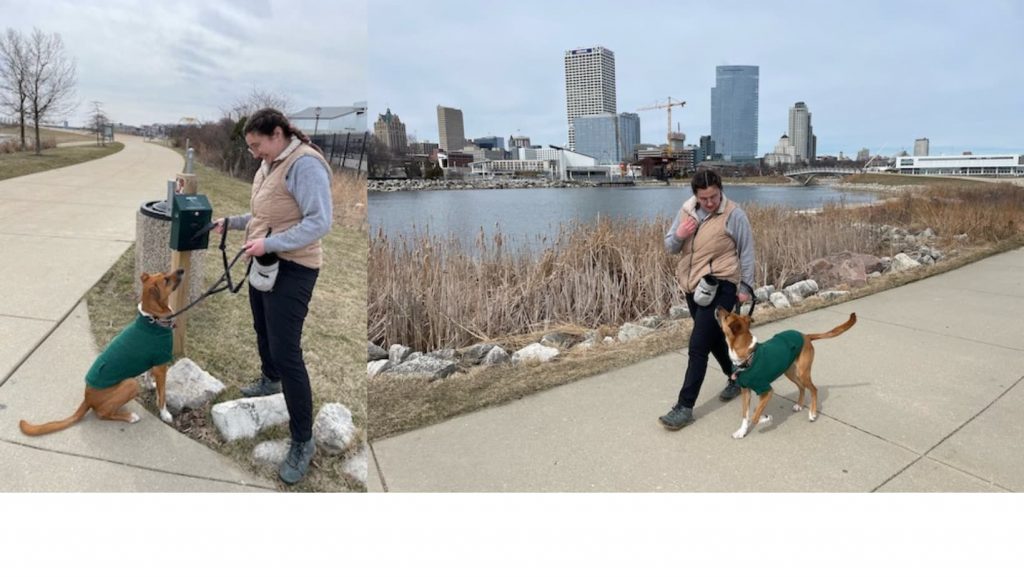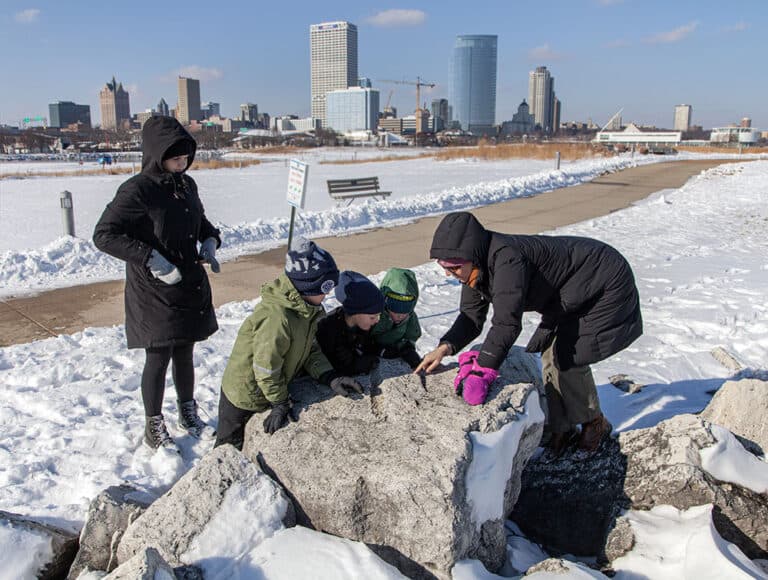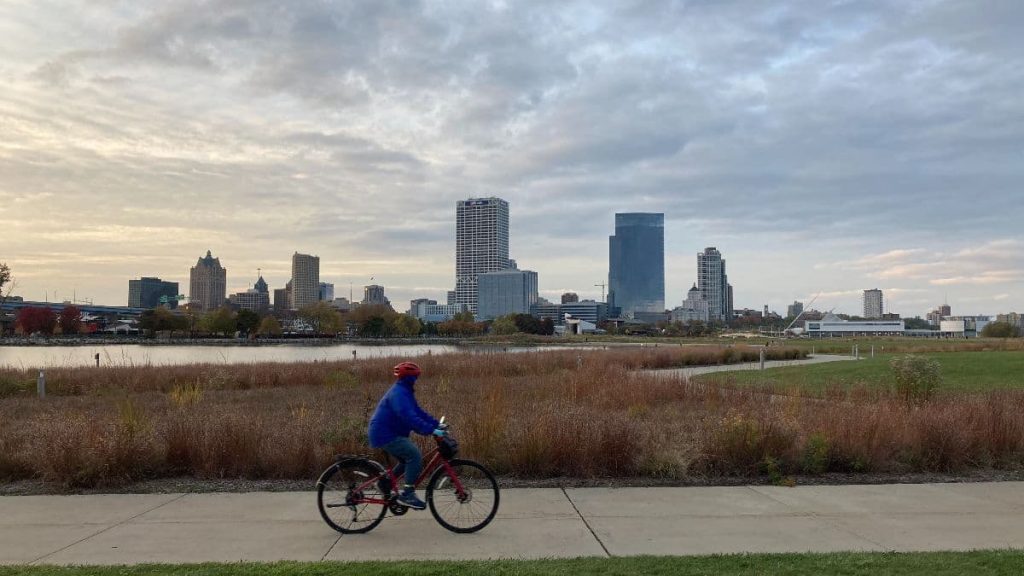Making the perfect loop with your pooch
Lakeshore State Park is a very accessible nature loop for you and your dog when you want to get some outdoor time close to the city. The park provides many opportunities for sniffing, which not only can calm your dog, but is also an important mental stimulus for them! Park rules require your dog to be leashed at all times, which can be difficult for leash-reactive dogs. Here are a few tips from a former dog walker:
Choose a well-fitting collar or harness
Harnesses can be a comfortable option for your dog, but if your dog pulls a lot it can be hard to walk them with a traditional harness. A front-clip harness can help direct your dog better, or you can try a collar that constricts evenly around your dog’s neck. This could be a Martingale collar or a prong collar. These are safer than regular collars because they evenly distribute the pressure around the dog’s neck, rather than all the force concentrated on the windpipe. Choke collars like these can be especially helpful to give corrections to a dog that can get aggressive or pull too much on leash. They also make it less likely that your dog will slip their collar and get free!
Bring treats
You can bring treats in a baggie, fanny pack, or clip-on training pouch. Many trainers recommend associating any time you give a treat to your dog with a word like “yes!” to create a dopamine pathway between that word and food. So, even if you don’t have a treat on you, saying “yes!” when your dog does what you ask will give them a little dopamine kick.
Practice walking in a low-stimulus area before coming to the park
Going on a walk is one of the most exciting parts of the day for your dog, so bringing them to a place bustling with other dogs; bikers, walkers, runners, and wildlife can be really distracting. Set your dog up for success by practicing walking with them in a low-stimulus area. When your dog looks back at you without your prompting, give them a treat. This associates that behavior on a walk with getting good things.
Practice commands like “heel” or “leave it”
You can start to associate your dog walking near you with a command like “heel” so that you can have them walk calmly next to you. To do this, hold a treat by your side and when they reach for the treat, say “heel.” Repetitions of this will associate walking by your side = treat. If you have a reactive dog, the command “leave it” is a good one to have in your arsenal. You can teach this by saying “leave it” when you see something distracting, such as a biker, a runner, or another dog. When your dog looks back at you, give them a lot of treats for making the right decision.
Pick up dog poop
Dog poop doesn’t add nutrients to the environment like the poop of our native wildlife does. It can also spread disease, and it detracts from the appearance of the park for other visitors. You can tie bags to your leash. Or, when you buy dog-poop bag rolls in bulk, they often give you a free dispenser that can attach to your leash. Be a friend to the park and pick up after your dog.




